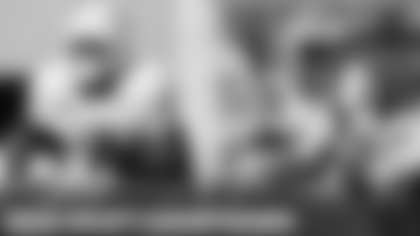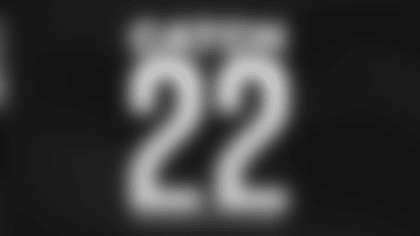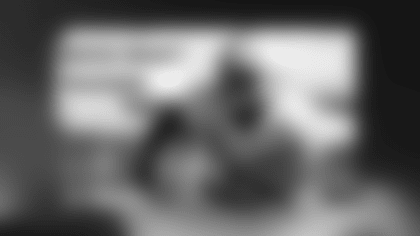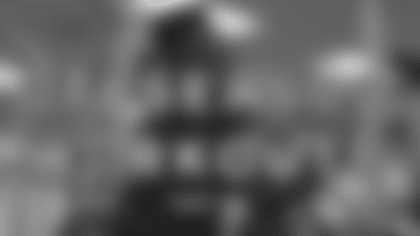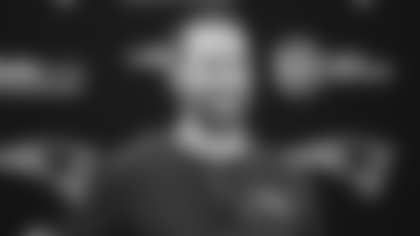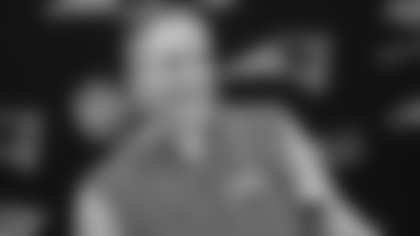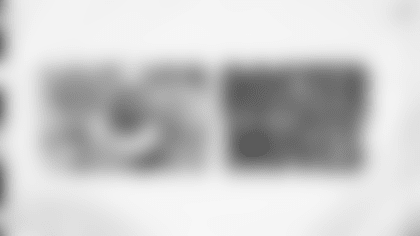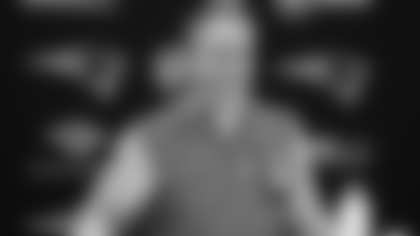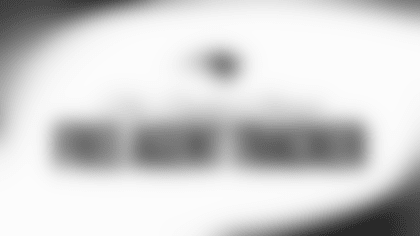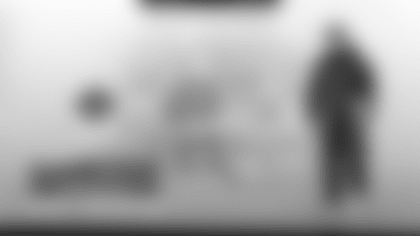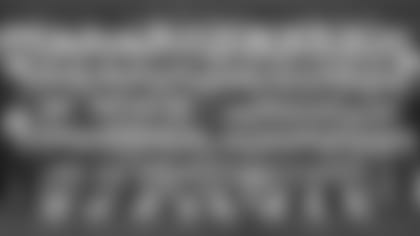Sit back for a minute and think about the St. Louis Stallions. Swish that name around in your mouth and get a taste. Maybe even close your eyes and picture Bill Parcells strolling down the sideline in the purple and yellow Stallions colors screaming instructions at Stallions quarterback Drew Bledsoe. Now, thankfully, spit that out and rinse.
Why that exercise? Because the New England Patriots were dangerously close to relocation back in 1994. St. Louis bound. The Stallions. Purple and Yellow. A new stadium.
But, ironically perhaps, the old stadium is what helped keep the Patriots in Foxborough. Yes, that old, dilapidated, amenity-free concrete pile first called Schaefer, then Sullivan and finally Foxboro Stadium factored into the Patriots staying put. One would think it would have been the primary reason for leaving, but more on that later.
There would have been no 1996 fog game against the Steelers. No Snow Bowl win over the Raiders. No upset of the St. Louis Rams in 2001. No New England Dynasty. No Patriot Place. No TB12 or JE11 or LG or Gronk. None of it. Not here, anyway.

Perhaps New England would have been given an NFL expansion team after Massachusetts taxpayers ponied up for a new stadium, but then again, maybe not. It took a quarter century for Los Angeles to reclaim an NFL team after the Rams took the Patriots' place by relocating to St. Louis in 1994 – seven years before the Pats beat them in Super Bowl XXXVI.
The Patriots would have been added to the list of New England's other failed pro football franchises, a list that includes the Boston Braves/Redskins, Boston Yanks, Boston Bears, Boston Bulldogs, Boston Shamrocks, Boston Breakers, Hartford Blues and Providence Steam Roller.
The relocation prevention came courtesy of one man: Robert K. Kraft.
And it almost didn't happen.
"It was clear from the start that they wanted to move the team to St. Louis," Kraft told the Boston Globe's Will McDonugh back in the winter of 1994. He was referring to then-Patriots owner and Anheuser-Busch heir James B. Orthwein and, more specifically, Orthwein's lawyer, Walter Metcalfe. It was Metcalfe driving the relocation efforts.
"They never wanted me to have the team," Kraft continued. "They tried to keep me out of the process. There were seven or eight times in December and January that I thought the team was gone. If Jim Orthwein had his wish, the team would have been in St. Louis. I don't blame him. He's from St. Louis and wanted to bring a team to that city. But he also wanted to sell the team without any problems. He wanted to sell and go fishing, and in the end, this was a big factor in our favor."

The process was arduous, but the Patriots were legally bound to Foxboro Stadium through 2001 thanks to the lease Kraft held with the club. That lease proved to be his strongest bargaining chip.
Let's rewind a bit.
While Kraft bought the team on January 21, 1994, he began angling for it far sooner. He was buying the land around the stadium in the 1980s with his eye on the prize. A season ticket holder since 1971 and a fan since 1960, Kraft dreamed of owning the Patriots, but the timing and the details needed to work. Owner Billy Sullivan, who founded the team in 1960, would also need to be a willing seller.
Then came Victory. Not a win for anyone, per se, but Victory as in Michael Jackson's concert tour. The Sullivans had signed a terrible investment deal in Jackson's Victory Tour, which never even came to Foxborough because the town did not approve a permit for the event. The investment led to Billy Sullivan's bankruptcy filing and the forced sale of the Patriots and Sullivan Stadium.
So in 1988, with the team and the stadium on the block, Kraft left the table with the stadium, but not the team. He had negotiated for the club, but never reached an agreement with the Sullivans.

Enter Victor Kiam and the absolute disaster that was 1988-1992. Kiam made his money selling electric razors with his famous "as close as a blade or your money back" tagline. On the field, though, the team was not close to anything but losing. It was 23-57 over those five seasons under three different head coaches. There was the 1-15 season in 1990 and a 2-14 campaign in 1992. Oh, and don't forget about the sexual harassment lawsuit resulting from players exposing themselves to a Boston Herald female reporter in the team's locker room.
In 1992, Kiam sold controlling interest of the team to Orthwein, who at the completion of the 2-14 season, made a coaching change and hired Bill Parcells.
With the credibility of a two-time Super Bowl champion head coach leading the team, Orthwein thought he would secure a St. Louis buyer and help facilitate the move. St Louis had lost its NFL franchise when the football Cardinals packed up and moved to Arizona in 1988.
But Orthwein had one major hurdle to clear that blocked his path. That hurdle was Kraft, the Brookline native with an emotional investment in the team and a strong desire to keep it in New England. Thankfully, he had that lease.
The St. Louis group understood that picking up and moving the Patriots without Kraft's approval would have led straight to a courtroom, and that approval was never coming. Orthwein's group offered Kraft $75 million to break the stadium lease so it could move the team. Kraft had paid $25 million for the stadium, but rather than walk with a huge profit, he countered with an offer to buy the Patriots.
"I told them no," Kraft told McDonough. "Not for any amount of money because the thing that made it possible to keep the team here, and for me to get the team, was my lease in the stadium. I told them the lease was not for sale."
But the team still was for sale, and eventually, Kraft forced his way into the process, received access to the team's financial documents and, along with his son, Jonathan, earned a seat at the negotiating table. When those negotiations finally went public in mid-January, the Patriots had a new owner with local roots, and the team was here to stay.
Kraft exceeded his personal $125 million limit and paid more for the Patriots, $172 million, than anyone had ever paid for an American professional sports franchise at that time. In fact, he paid far more than he would have back in 1988 when he made a pitch for the team. The timing to do so was more palatable thanks to the 1993 NFL collective bargaining agreement that had introduced a salary cap and revenue sharing into the league's structure. Those two factors made the deal's economics more advantageous.
Critics thought Kraft had made an ill-advised emotional decision to spend that obscene amount of money on what was considered one of the worst franchise's in pro sports. He listened to his critics and then bought the team anyway.
"This team will be playing in New England forever as far as we're concerned," Jonathan Kraft said back in 1994.
The Krafts have kept the promise. They also reached their goal of bringing a championship to New England. The team's success since Jan. 21, 1994 is nothing short of remarkable especially when one considers how far the team had fallen.
The Patriots had not played in a playoff game since January 4, 1987. Between that playoff loss and the day the Krafts assumed ownership, the team's record was 35-75. It was a dismal franchise playing in a substandard stadium which left it at a competitive disadvantage given the venue's lack of revenue generators. A day after the Kraft family officially took over the club on Feb. 25, 1994, fans turned out in the snow to scoop up a single-day franchise record 5,958 season tickets.
With an accomplished head coach on the sideline and a new owner with local roots, fans started buying into the Patriots future. The Krafts also rolled up their sleeves and traveled the region to sell their commitment. Consequently, the team sold out every game in 1994 for the first time in franchise history. It then sold out every game in 1995 before the season started – another first. It has sold out every game since.
On-field success was almost immediate. The 1994 team rattled off seven straight wins to end the season and earn a Wildcard berth. Two years later, the Patriots hosted their first playoff game since 1978 and won an AFC Championship at Foxboro Stadium.

The Patriots made three straight playoff appearances for the first time in history when they qualified in 1996, 1997 and 1998. Three years later, after Kraft hired Bill Belichick to be his head coach, the Patriots won their first Super Bowl and followed it with two more over the next three years. Since winning the first in 2001, Kraft's club has qualified for the playoffs in 14 of 16 seasons while also capturing a fourth Super Bowl title in 2014.
It was unfathomable in 1994 to think that the New England Patriots would evolve into a model franchise. No team has won more regular season games (255), more playoff games (26), more division titles (16), more conference titles (7) or more Super Bowl championships (4) since 1994 than the Patriots.
And by the way, the Kraft family also privately financed a new stadium in Foxborough, which kept taxpayers off the hook. Gillette Stadium, which opened in 2002, gave the team a state-of-the-art venue with modern player and fan amenities along revenue streams to keep the team competing on a financially even playing field with its NFL brethren.
The New England Patriots have a different identity than they did 23 year ago. No longer is the team the punchline to a joke. No more "Patsies." No more cold showers and metal benches. No more praying for a simple playoff berth. Now the Patriots stand for success and they do it right here representing the six-state New England region while St. Louis, incidentally, is once again without an NFL team.
Foxboro Stadium was a verbal punching bag over the years but without it, the Patriots red, white and blue would have been Stallions purple and yellow. Thank goodness New England fans never had to experience that bitter taste.


